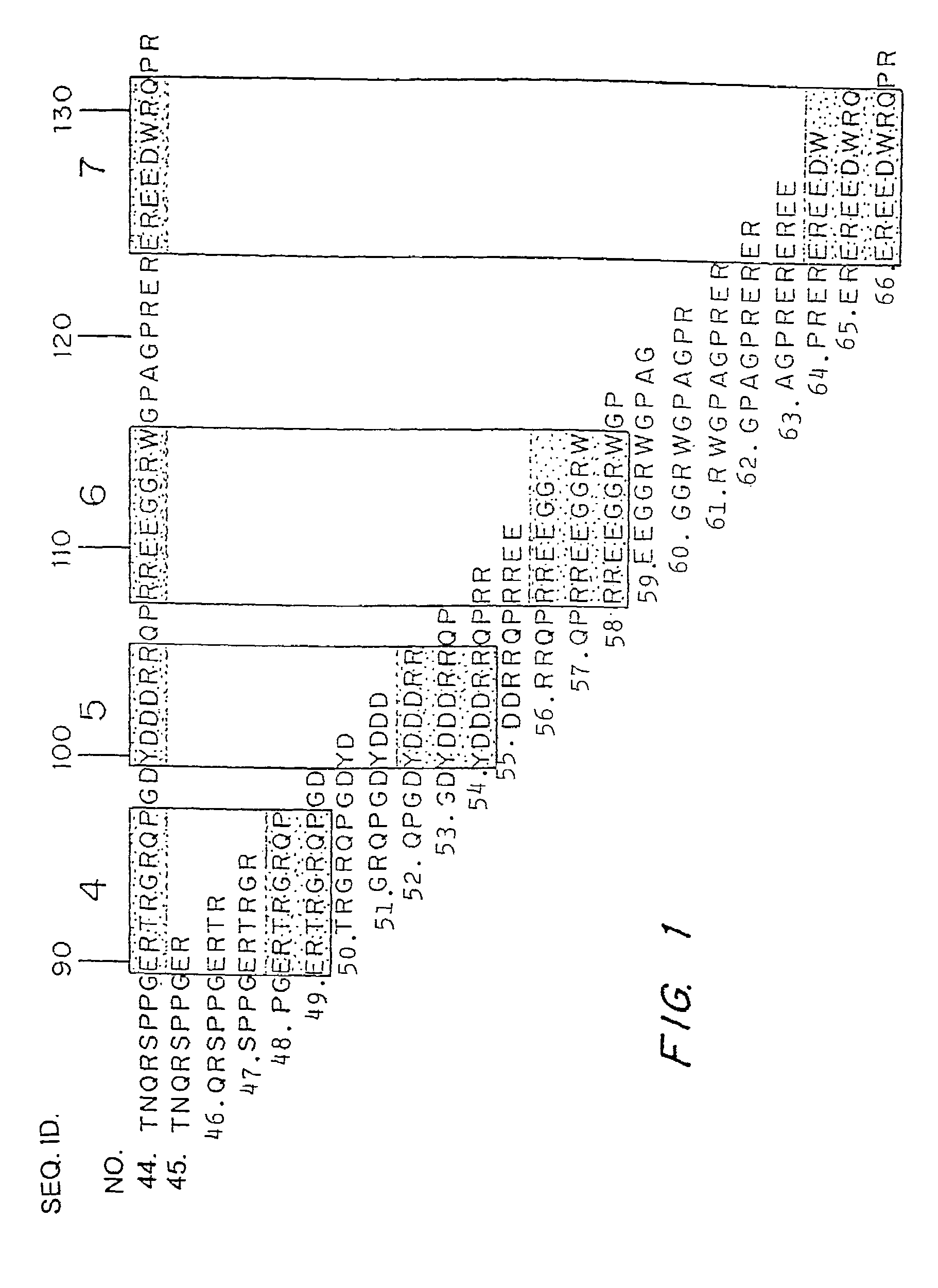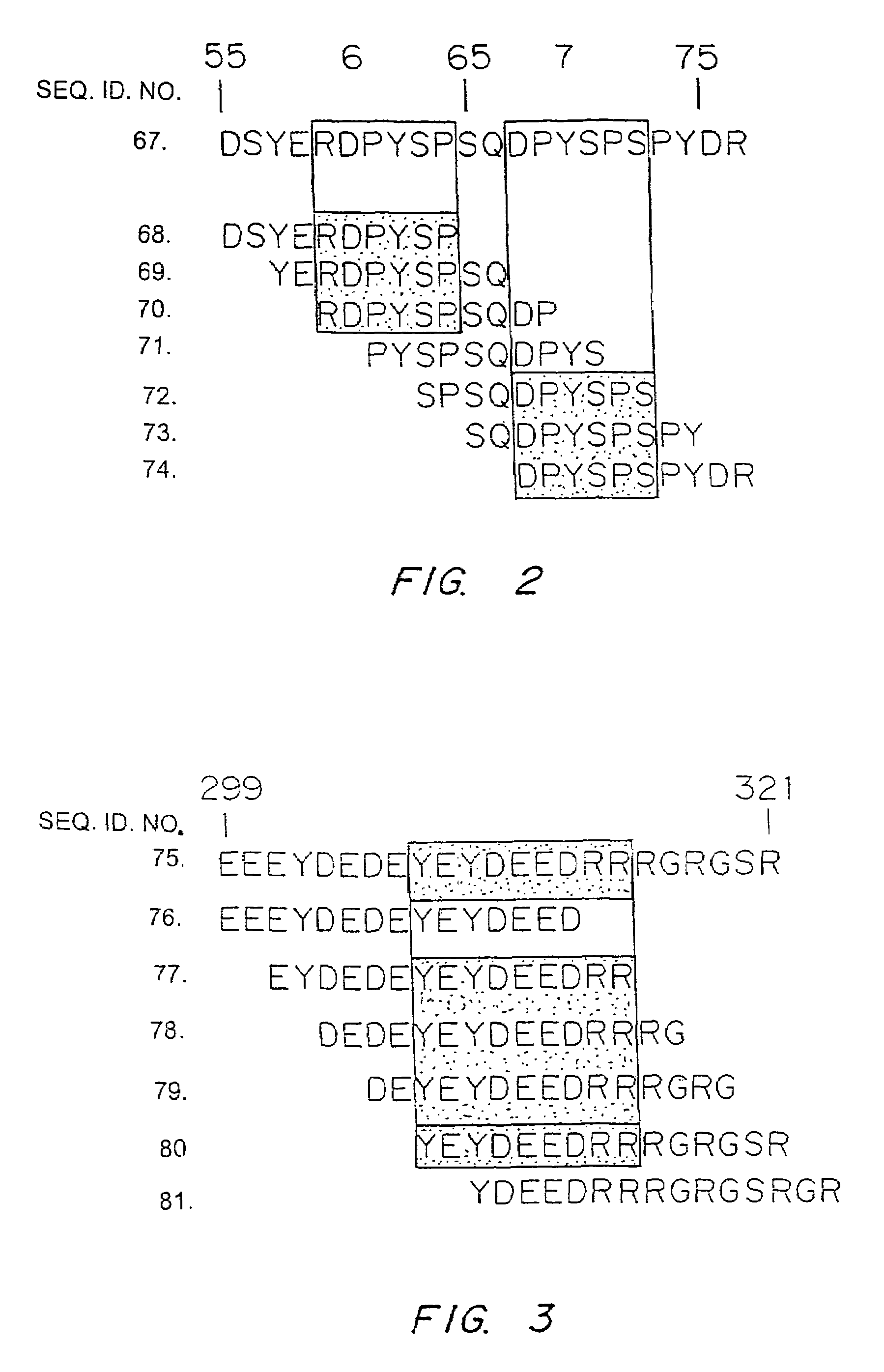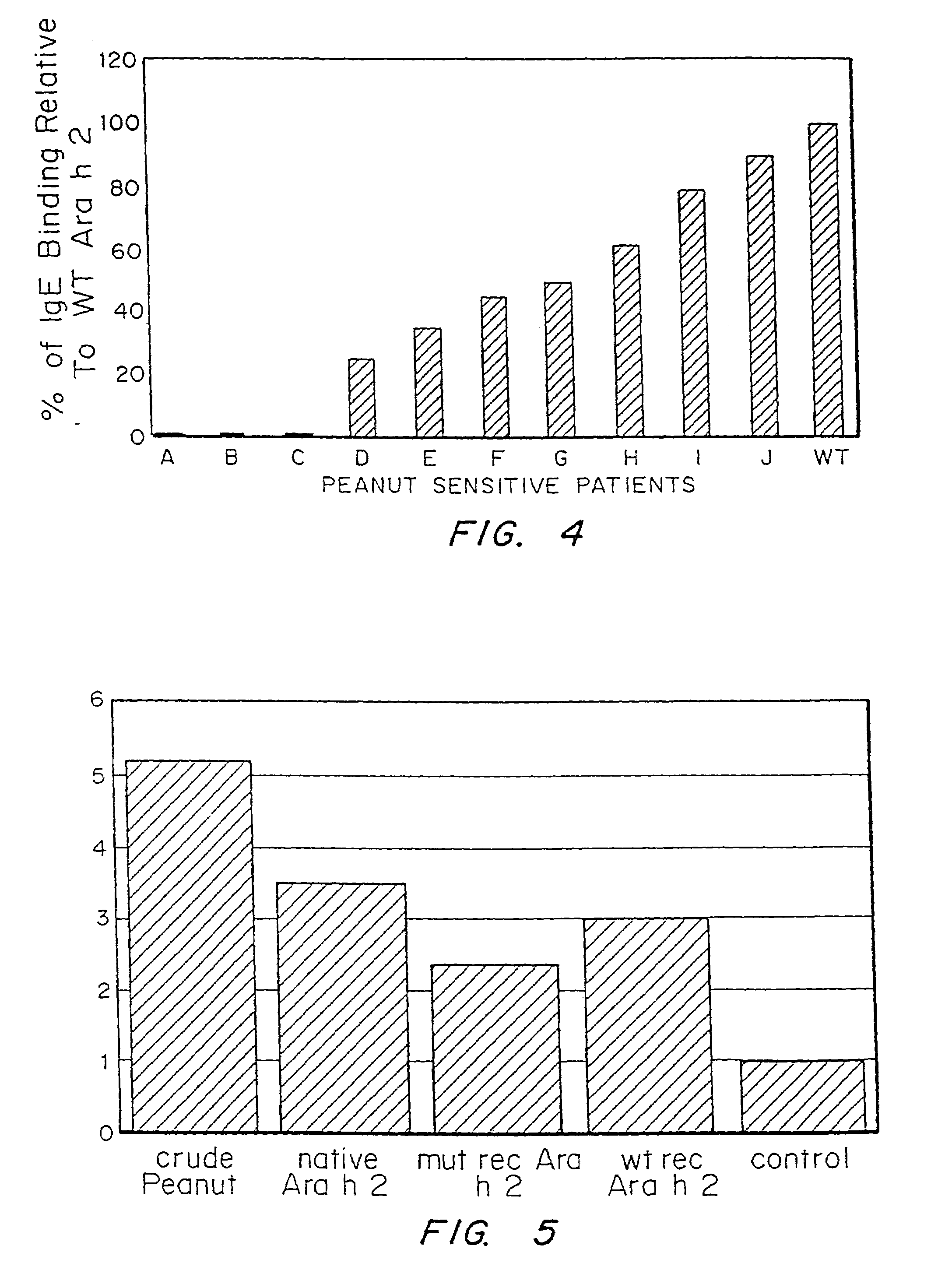Nucleic acids encoding ara h 3 polypeptides
a technology of ara h 3 and nucleic acids, applied in the direction of peptides, plant/algae/fungi/lichens ingredients, fungi, etc., can solve the problem of loss of ige binding, and achieve the effect of eliminating ige binding
- Summary
- Abstract
- Description
- Claims
- Application Information
AI Technical Summary
Benefits of technology
Problems solved by technology
Method used
Image
Examples
example 1
Identification of Linear IgE Binding Epitopes
[0062]Due to the significance of the allergic reaction and the widening use of peanuts as protein extenders in processed foods, there is increasing interest in defining the allergenic proteins and exploring ways to decrease the risk to the peanut-sensitive individual. Various studies over the last several years have identified the major allergens in peanuts as belonging to different families of seed storage proteins (Burks, et al. (1997) Eur. J. Biochem. 245, 334-339; Stanley, et al. (1997) Arch. Biochem. Biophys. 342, 244-253). The major peanut allergens Ara h 1, Ara h 2, and Ara h 3 belong to the vicilin, conglutin and glycinin families of seed storage proteins, respectively. These allergens are abundant proteins found in peanuts and are recognized by serum IgE from greater than 95% of peanut sensitive individuals, indicating that they are the major allergens involved in the clinical etiology of this disease (Burks, et al. (1995) .J. Cl...
example 2
Modification of Peanut Allergens to Decrease Allergenicity
[0076]The major linear IgE binding epitopes of the peanut allergens were mapped using overlapping peptides synthesized on an activated cellulose membrane and pooled serum IgE from 15 peanut sensitive patients, as described in Example 1. The size of the epitopes ranged from six to fifteen amino acids in length. The amino acids essential to IgE binding in each of the epitopes were determined by synthesizing duplicate peptides with single amino acid changes at each position. These peptides were then probed with pooled serum IgE from 15 patients with peanut hypersensitivity to determine if the changes affected peanut-specific IgE binding. For example, epitope 9 in Table 1 was synthesized with an alanine or methionine residue substituted for one of the amino acids and probed. The following amino acids were substituted (first letter is the one-letter amino acid code for the residue normally at the position, the residue number, foll...
example 3
A Modified Ara h 2 Protein Binds Less IgE but Similar Amounts of IgG
[0085]In order to determine the effect of changes to multiple epitopes within the context of the intact allergen, four epitopes (including the three immunodominant epitopes) of the Ara h 2 allergen were mutagenized and the protein produced recombinantly. The amino acids at position 20, 31, 60, and 67 of the Ara h 2 protein (shown in SEQ ID NO. 4) were changed to alanine by mutagenizing the gene encoding this protein by standard techniques. These residues are located in epitopes 1, 3, 6, and 7 and represent amino acids critical to IgE binding that were determined in Example 2. The modified and wild-type versions of this protein were produced and immunoblot analysis performed using serum from peanut sensitive patients. These results showed that the modified version of this allergen bound significantly less IgE than the wild-type version of these recombinant proteins but bound similar amounts of IgG.
PUM
 Login to View More
Login to View More Abstract
Description
Claims
Application Information
 Login to View More
Login to View More - R&D
- Intellectual Property
- Life Sciences
- Materials
- Tech Scout
- Unparalleled Data Quality
- Higher Quality Content
- 60% Fewer Hallucinations
Browse by: Latest US Patents, China's latest patents, Technical Efficacy Thesaurus, Application Domain, Technology Topic, Popular Technical Reports.
© 2025 PatSnap. All rights reserved.Legal|Privacy policy|Modern Slavery Act Transparency Statement|Sitemap|About US| Contact US: help@patsnap.com



